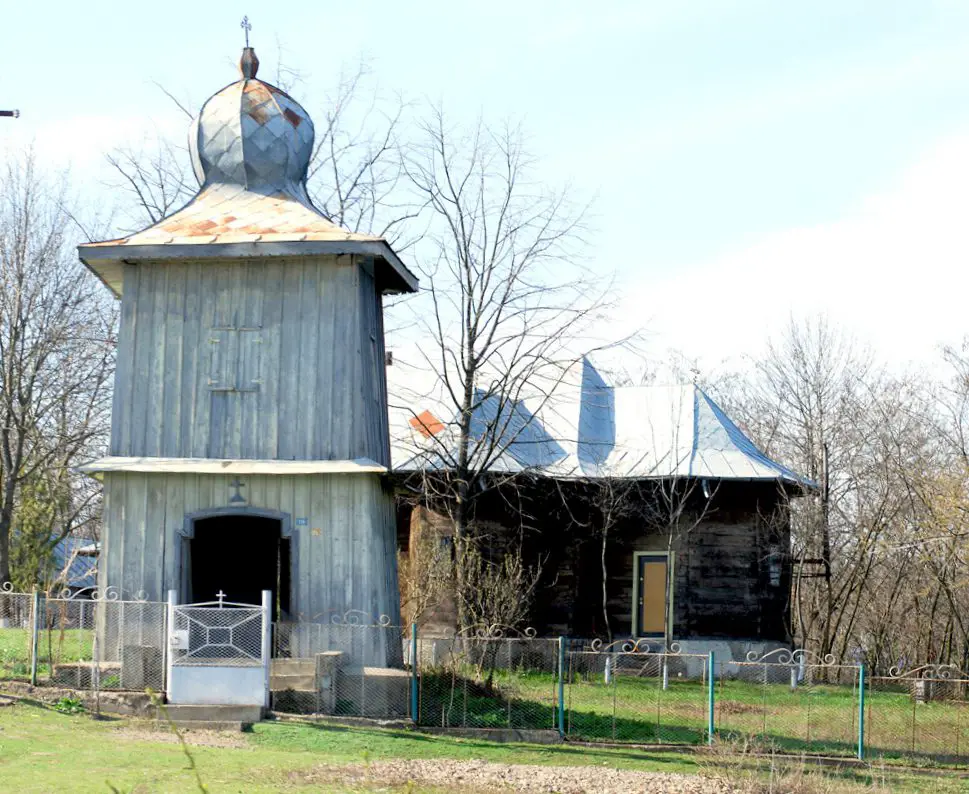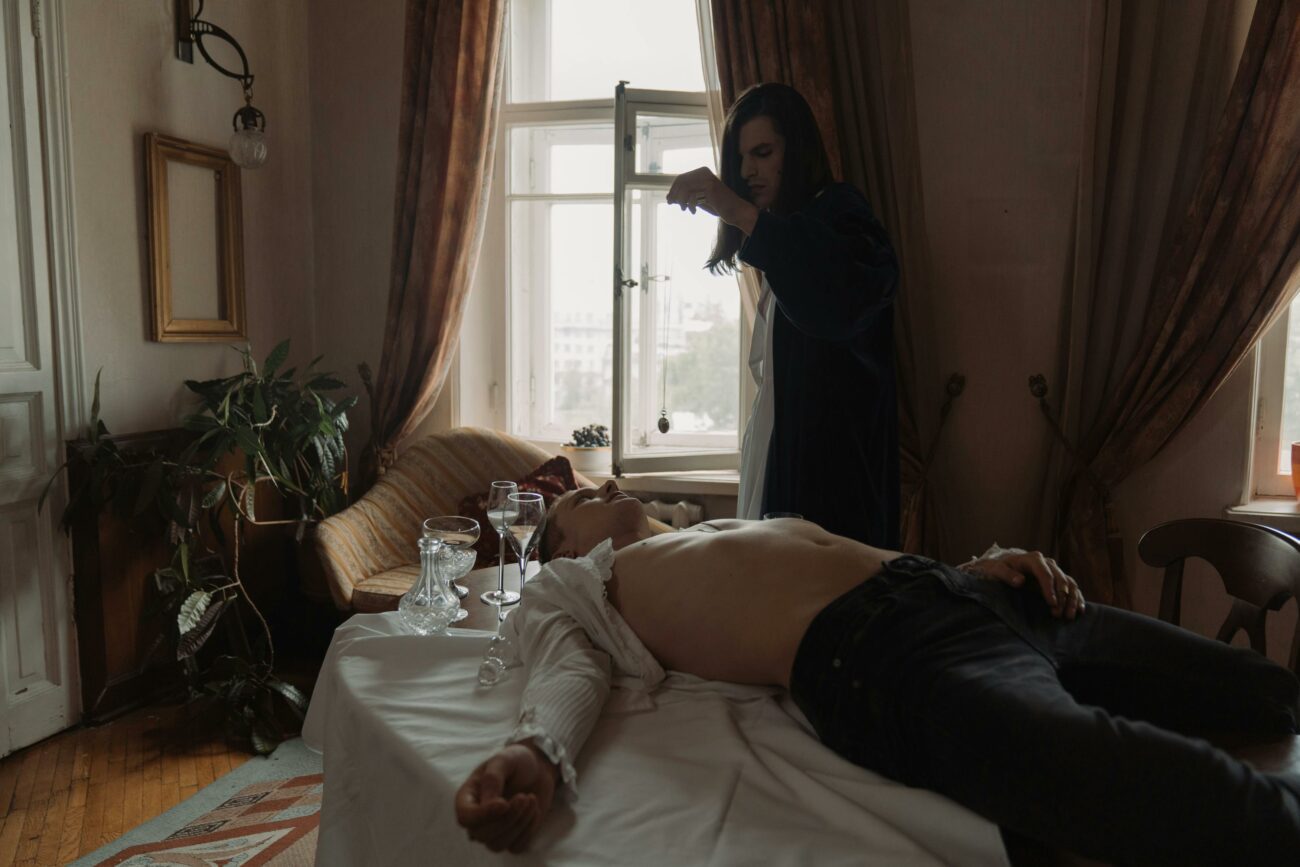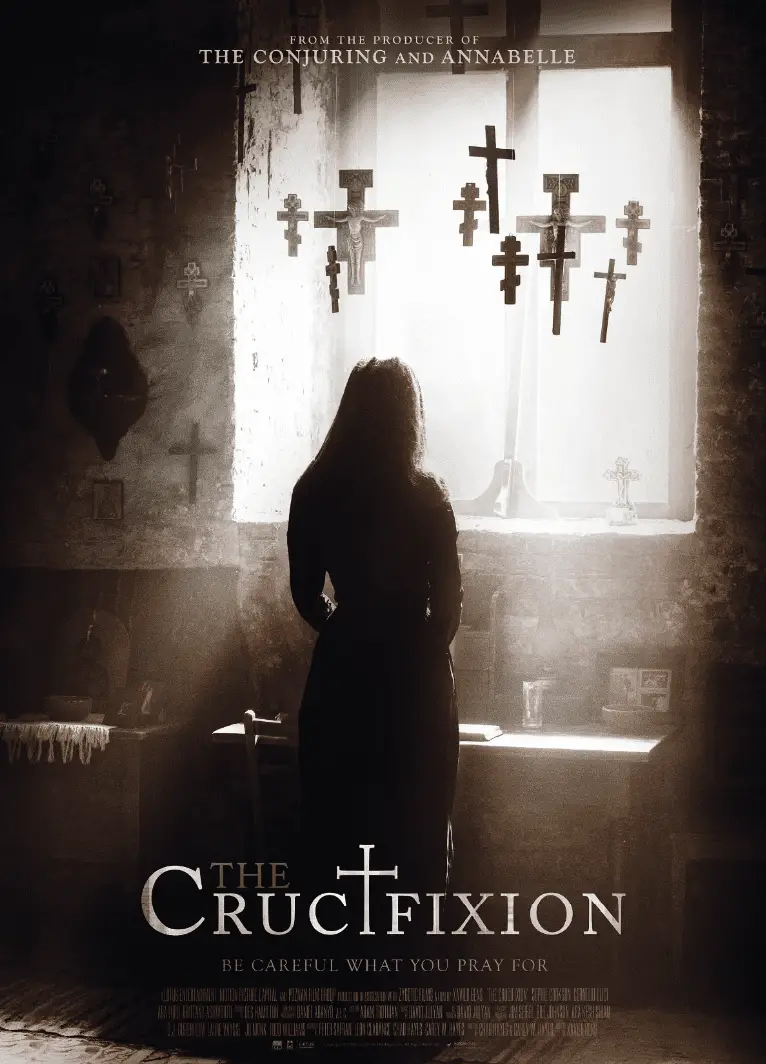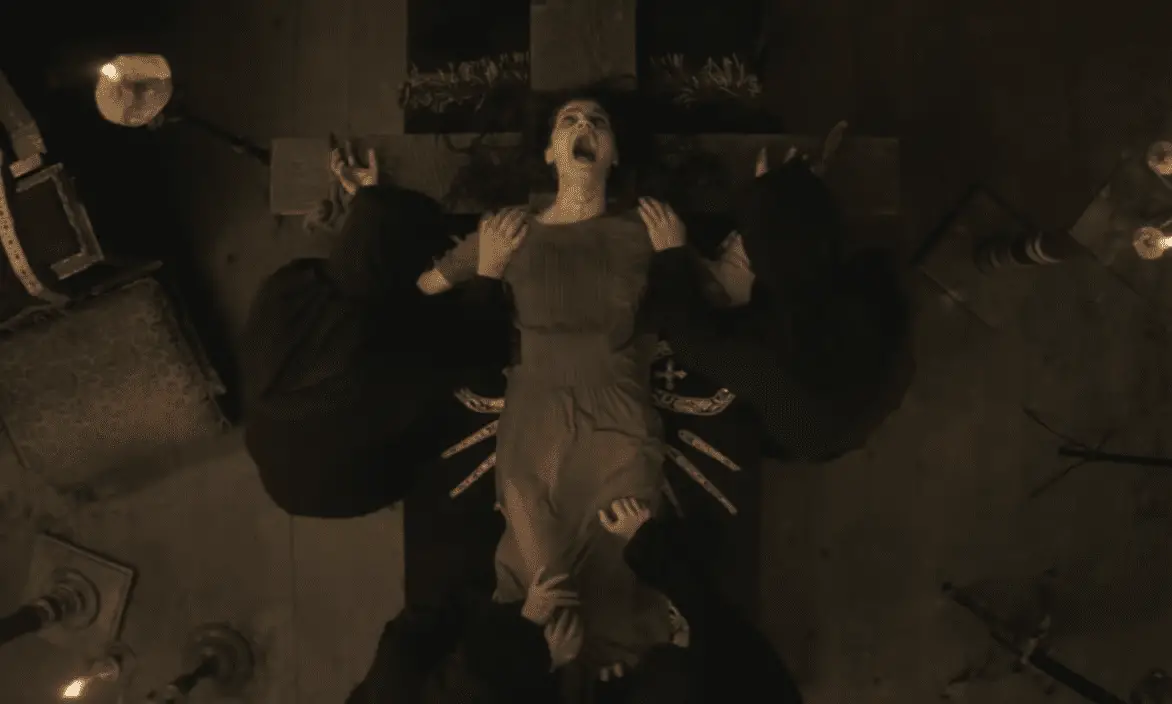In the Shadow of The Exorcist
It’s easy to think of something like an exorcism to be purely the domain of Horror cinema and literature. It’s difficult to believe that anyone in the 21st century would be subjected to that sort of procedure. Even the allegedly-true events that inspired William Peter Blatty’s The Exorcist feel like relics of a bygone era, the product of a time and place far removed from our own.
And yet we can attribute the majority of our knowledge of demonic exorcism to William Peter Blatty and William Freidkin. The Exorcist shoulders most of this pop-cultural responsibility. There’s almost no point in discussing The Exorcist and its spinoffs; most readers of this magazine will intimately know the source material. Blatty’s novel and Freidkin’s film adaptation are, in many regards, the gold standards by which modern Horror media is measured. According to a Rotten Tomatoes article from 2022, The Exorcist is the scariest movie ever made. But The Exorcist is just a movie. As a result it is easy to forget that Exorcism, while a rare practice, is still going on today. There are still communities and individuals who believe in the very real danger of demonic possession.
And it’s this belief that led to the death of a Romanian Orthodox nun, Maricica Cornici, in 2005. The death of an individual in an isolated community in a former Soviet bloc country typically does not make headlines. But the details are too tantalizing to not reach world audiences: A nun is killed in a seemingly impossible way. All of the individuals involved seem larger than life. And just for added flavor, there are rumors of torture and cult-like behavior. It is a story that could lead to the continued stereotyping of struggling Eastern European nations, or lead to a greater understanding of global issues.
Horror media seems to expressly deal with things beyond belief. That’s why it’s no surprise that The Crucifixion, a horror film loosely based on the events of Maricica Cornici’s death, almost feels inevitable. And as we all know, the best scary stories are always the ones with a little bit of truth mixed in.
The Exorcism in Tanacu

Tanacu is in the Western Moldavia region of Romania. Many describe it as an impoverished rural area, hard hit by the fall of Communism and the policies of the dictator Nicolae Ceaușescu. Soviet Marxist-Leninism is formally an atheistic system. While the Soviet Union itself never outlawed religious practice, Churches did not receive government funding and belief in their faiths were discouraged. With the persecution of the Orthodox Church under Ceaușescu’s regime as a thing of the past, the Orthodox Church had become a deeply trusted institution.
Maricica Cornici was one such individual who put her faith in the Romanian Orthodox Church. She dealt with a lot of hardship in her 23 years. She had been raised in a rural orphanage and began displaying signs of schizophrenia. After receiving psychiatric treatment she was sent to Holy Trinity Convent. She would never leave there alive.
Cornici fell under the influence of the convent’s priest, Daniel Corogeanu. The Orthodox priest was only 29 at the time, sporting a massive red beard and seemingly all too happy to perform exorcisms. The symptoms of Schizophrenia can be extremely scary for people with the condition, and their subsequent behaviors can be scary or erratic for people unaware of the issue. This behavior led Corogeanu to treat her not as a person in need of medical assistance, but rather someone possessed by The Devil. As a result, the young nun would begin a grueling multi-day exorcism that would end in her being strapped to a cross for three days. Shortly after being released she lost consciousness. She died while in an ambulance headed towards a hospital. The fallout of Maricica Cornici’s death led Daniel Corogenau to be defrocked, and along with four nuns who served as his assistants, was sent to prison. Corogenau received a fourteen year sentence.
Exorcism in the Modern Era

The Orthodox Church shares the concept of Exorcism with the Catholic Church, and with many parts of Christianity broadly. Most mainstream churches are seemingly hesitant to disclose the amount of Exorcisms they authorize and perform in the course of a year. However most Churches have set rules regarding what conditions must be met before Exorcisms can be performed. For instance, Bishop David M. O’Connell of the Diocese of Trenton writes:
“The Catholic Church is very careful to distinguish between cases of true demonic possession and occasions of psychological disturbance or difficulty. For that reason, the Catholic Church requires that the person(s) claiming to be “possessed” must submit to a full psychological evaluation before the rite may proceed.” He goes on to outline the conditions needed to be met for an Exorcism to be performed. “Of those cases of demonic possession authenticated by the Catholic Church, these are some of the common signs or symptoms often attributed to such possession and reported by various sources: violent reactions toward religion or religious symbols, sacramentals and sacraments; alteration of an individual’s normal personality; supernatural strength beyond what would be ordinarily possible for an individual’s size or age; changes to an individual’s voice or vocal patterns and the ability to speak true languages never known or learned by the individual; loss of appetite; abnormal bodily postures; attacks by the individual on his own body such as biting or scratching and cutting; attacks on others, etc. When present, these symptoms have no explainable reason for their occurrence. They may, however, be psychological or physiological in nature. Again, one must carefully distinguish between psychological or other medically related disturbance and true demonic possession. For that, professional medical and psychological assistance is required. Ongoing counseling is also recommended.”
As for the Orthodox Church, it regards all priests as being Exorcists. According to an article published by the Greek Orthodox Church of America in 1990, “The demonic possession of individuals and even of objects, has been accepted by the Orthodox Church today in the Sacrament of Baptism, in exorcising satanic powers in the case of the evil eye (vaskania), and in exorcising the devil in the case of a possessed person.” According to theologian John Malov, “An exorcism must not be performed on persons who are not possessed, including but not limited to:
- Patients with a mental disorder;
- Individuals with distorted views about spiritual life
- Individuals who fake demon possession
- Sufferers from passions and addictions.”
From Reality to The Screen
The Crucifixion is not a film expressly dealing with the real events of the “Tanacu Exorcism.” Its premise draws strongly with Cornici’s death and the subsequent fallout within the community of Tanacu. But the movie spends very little time on these points. After the opening of the movie, you briefly meet a fictionalized version of Daniel Corogeanu, already in jail. You do spend most of the runtime in a fictionalized village representing Tanacu, but well after the exorcism has concluded.
Here is the ultimate weakness of the film: The Crucifixion is ultimately a by-the-numbers Horror film. It’s heavy on jump scares and audio cues. It features an emphasis on a “Sex Equals Death” trope, essentially indicating that Sister Adelina Marinescu (the film’s stand-in for Maricica Cornici) had premarital sex while abroad, opening her up to spiritual danger. It’s essentially a forgone conclusion that Adelina was possessed, and not dealing with essentially untreated psychiatric conditions. The attempted exorcism was the correct choice in the plot of the film, but it failed. As a result The Crucifixion has an extremely unsubtle and somewhat predictable plot.
However, Chad Hayes and Cary W. Hayes could have taken the film in a more procedural retelling direction. They could have showed the events leading up to the exorcism, the exorcism itself, Cornici’s death, and the subsequent legal fallout. But in doing so, they would have risked making their movie a mere reiteration of The Exorcism of Emily Rose. This would be a double-whammy of a mistake too; The Exorcism of Emily Rose is a very loose dramatization of the fatal exorcism of Anneliese Michel in Germany during the 1970s and its subsequent trial.
However, this is not to say that the film is a total failure, either. The Crucifixion focuses primarily on an American reporter named Emily who has taken an interest in the exorcism of Sister Adelina Marinescu. She travels to Romania to learn about the exorcism and subsequent death. From here she descends into a world of Folk Belief, Orthodox mysticism, and a confrontation with her own deep cynicism towards faith.
Moreover, The script of The Crucifixion is remarkably true to some of the more subtle the details of the Tanacu case. It attempts to cover the intricacies of the Romanian Orthodox Church in the late 90s and early 2000s, their rush to dispatch priests to communities, and the problems that caused. But this isn’t enough to carry a scary movie. Ultimately we learn very little about the priest or the nun-assistants who performed the exorcism on “Sister Adelina,” and spend most of our time focusing on Emily’s struggle with faith. We also watch her go through a handful of brutal spiritual attacks through the movie, enough to carry the film to a satisfying and creepy conclusion.
Analysis: How Does The Crucifixion Handle This “True Story?”

The Crucifixion feels like a film torn between two intentions. The script feels like it is trying to be dedicated to telling a mostly true accounting of the Tanacu case. On the other hand, the movie can feel almost overloaded with the tropes that audiences have come to expect. Emily is battling with her lack of faith, and it is hammered home in the script that she must accept the message of the Church to survive this encounter.
So what are audiences supposed to be experiencing here? The very real story of a mentally ill woman dying under mysterious, and potentially diabolical, circumstances? Are we supposed to be afraid of Father Dimitru (the character depicting Daniel Corogeanu?) Or is the intention of the film more to explore spooky supernatural goings-on?
If you are expecting a more high-brow piece of exorcism-based scares, this isn’t the movie to watch. If you are looking for a competently made, if a bit by-the-numbers sort of movie, The Crucifixion is an excellent choice. There are a lot of fun scares and gorgeous visuals crammed into its runtime.
If the whole story revolved entirely around Romanian locals living with the fallout of this incident, the supernatural elements of the possession could almost be overlooked. It would be easier to suspend your disbelief in that circumstance. Adding in a non-Romanian character might be attempting to give the audience someone to identify with, but that frankly falls flat. Given the horrific setup of the movie, what difference does Emily’s religious struggle make?
The one place where The Crucifixion gets past the somewhat confusing narrative decisions is in its visuals. The Crucifixion is a distinct movie making use of haunting visuals (the final clash of the film has a moment of disturbing but beautiful demonic acrobatics,) and oppressive atmospheres.The movie was filmed in Romania with a largely Romanian crew. This gives The Crucifixion a feeling of authenticity that other locations might lack. (For this reason it can call to mind the original Full Moon Features production Subspecies.) The excellent visual direction and use of atmosphere make the movie worth recommending, but with a caveat. While the acting might be inconsistent in a few spots, it’s easy to overlook these issues with how attractive this movie is at times. What’s an accent slip in hundreds of words of dialogue compared to the beauty of the Romanian countryside?
Conclusion – Is there something to learn from The Crucifixion?

We live in a world far removed from the conditions which created the early Christian movement. We know more about the functions of the human brain today than we have ever known before, and as a species we are accumulating more knowledge on this, and every other subject, at an exponential rate.
Additionally, we also live in an era of unprecedented access to global knowledge. We can learn about the goings on in small communities around the world, either from major news outlets or by speaking in real-time to its inhabitants via online voice chat. As a result we are becoming privy to the worlds of more people than were ever possible before.
But in an era of increasing knowledge, why are we still dealing with the concept of demonic possession? Shouldn’t the accumulation of knowledge and expansion of human interaction permanently banish demons back to Hell, whether that Hell is real or imagined? Did a 23 year old woman have to die like this?
I personally think that humans are in a position that is brand new in our time on this planet. The same brain that first learned how to make fire is, evolutionarily speaking, the same brain that created the Atomic Bomb. The fear of Demonic Possession, the fear of losing agency and control over one’s Self, is an ancient fear.
Storytelling is one of our oldest abilities. Knowledge of the exorcism and death of Maricica Cornici means that we would end up telling her story in different ways, and The Crucifixion is merely an outgrowth of that ability. While the movie itself doesn’t have an expressed lesson to tell us, I think it acts as part of a chorus in Horror Cinema and Media. Specifically, that chorus is telling us about that fear of possession and the loss of agency. I think it also tells us to question our institutions, especially ones that presume to speak of Universal Truth. But it might also tell us about the value of community, and what happens when communities and institutions fail to help their members. We might not ever be able to fully exorcise that ancient fear, but we might learn to confront it through these stories.
Further Reading:
- https://www.imdb.com/title/tt4181782/faq/?ref_=tt_faq_sm
- https://catalog.obitel-minsk.com/blog/2023/01/the-practice-of-exorcism-in-the-orthodox-church-history-and-the-present-day-controversies
- https://allthatsinteresting.com/real-exorcisms/9
- https://www.nytimes.com/2005/07/03/world/europe/a-casualty-on-romanias-road-back-from-atheism.html
- https://www.cbsnews.com/news/nun-dies-after-convent-exorcism/
- https://www.huffpost.com/entry/secrets-of-orthodox-exorcists_b_925883



